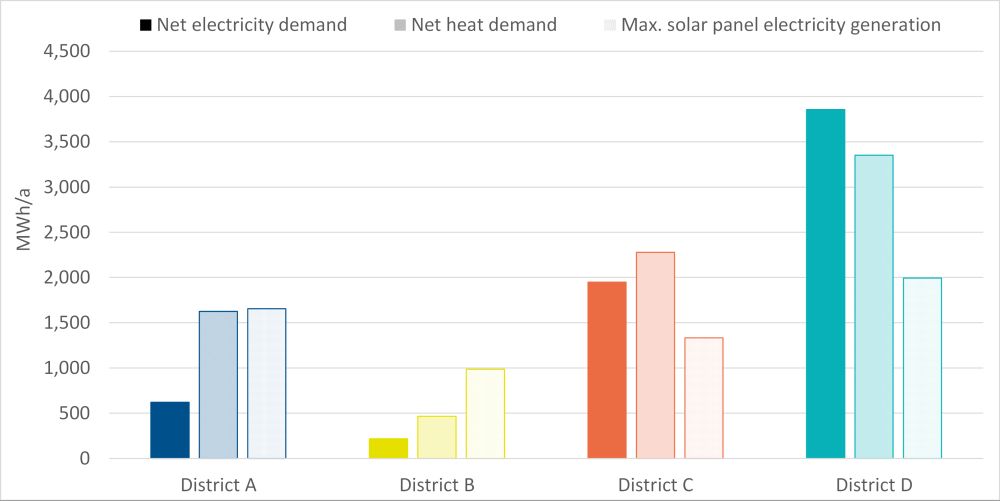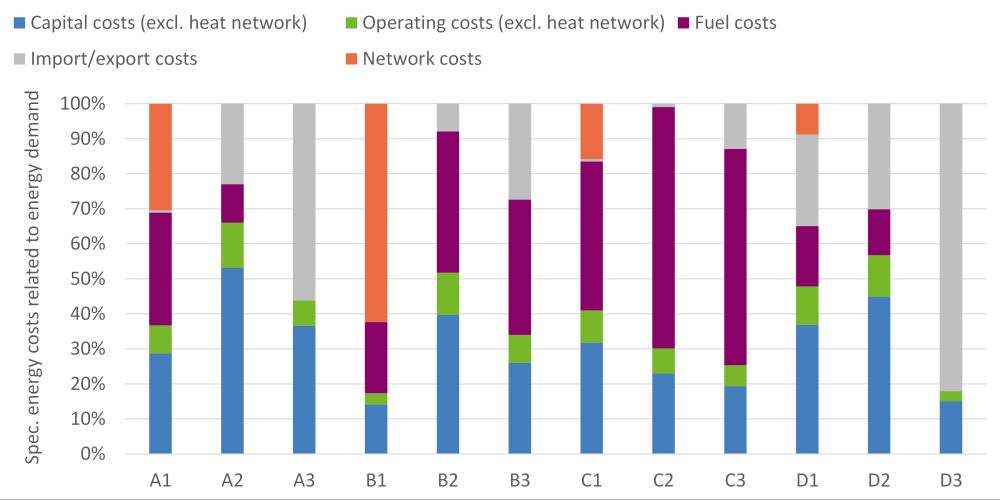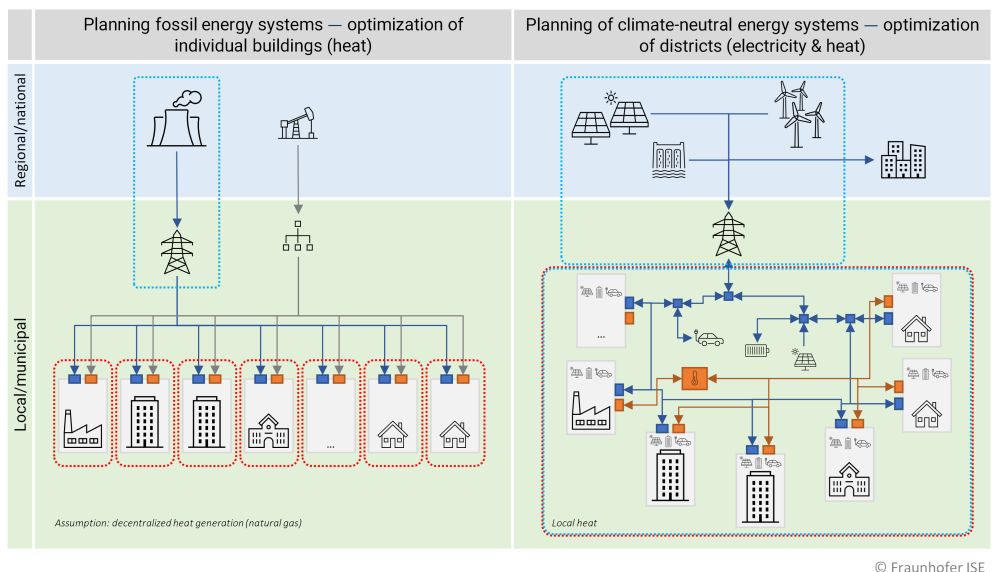| Duration: | 2021 - 2022 |
| Contracting Authority / Sponsors: |
Deutsche Energie-Agentur GmbH (dena) |
| Project Partners: | Deutsche Energie-Agentur GmbH (dena) |
| Project Focus: |
Modeling Sector-Integrated Energy Supply in the Neighborhood


In the research project "Modeling Sector-Integrated Energy Supply in the Neighborhood" and the associated study, the advantages of the integrated optimization of energy systems at district level rather than at the level of individual buildings were investigated. Although there is an increasing focus on district-based heat supply, electricity systems with local generation for self-supply have so far only been optimized at building level due to regulatory conditions. In order to quantify the advantages of district optimization, model calculations were carried out in which the exchange of electricity and heat is possible locally without additional costs. A comparison was also made of how the resulting district-optimized energy system differs from the energy system in which each building is optimized individually and the district energy system is created by adding the individual systems.
In order to take into account the effect of the main influencing factors on the district energy systems and at the same time keep the number of calculation variants manageable, four district types were defined, which differ in terms of the criteria urban/rural, new build/refurbishment and residential/mixed area. This results in twelve variants, which were modeled with the KomMod energy system model in a sector-coupled manner. For each of the variants the cost-optimal overall solution was calculated.
As a result, it was shown that the district-optimized supply has clear economic advantages over the individual building supply if there is sufficient heat demand density. The reasons for this lie in an increased level of self-sufficiency with low-cost, locally generated renewable energies in the district supply and access to additional supply options through the use of a heating network.

If a heating network is available, a CHP unit or a large heat pump can be used, for example. If a central heat supply is not feasible, it is still worthwhile to enable the exchange of electricity between the buildings. This applies in particular to mixed-use areas with residential and commercial buildings, i.e. with different electricity usage profiles. This can reduce the exchange of electricity with surrounding areas and relieve the distribution grid.
In order to strengthen the resulting advantageous district solutions, further development of the regulatory framework is particularly necessary, as this is the only way the economic benefits can actually be used locally. This can take the form of extending the regulations on customer installations under the Energy Industry Act (EnWG) to include districts or by designing the legal framework accordingly when introducing renewable energy communities in accordance with the EU RED II Directive (European Union 2018).
Comparison of Energy System Planning
- Traditional energy system (left)
- Optimization of heat supply at building level (dotted red)
- Electricity supply at regional/national level (dotted blue)
- Future energy system planning (right): sector-coupled optimization of electricity and heat supply at local/municipal level (e.g. of districts), simplified illustration
